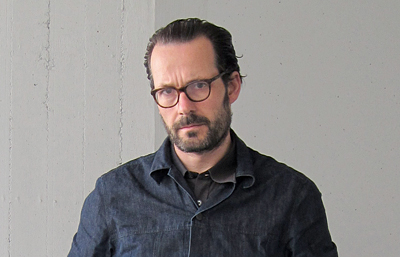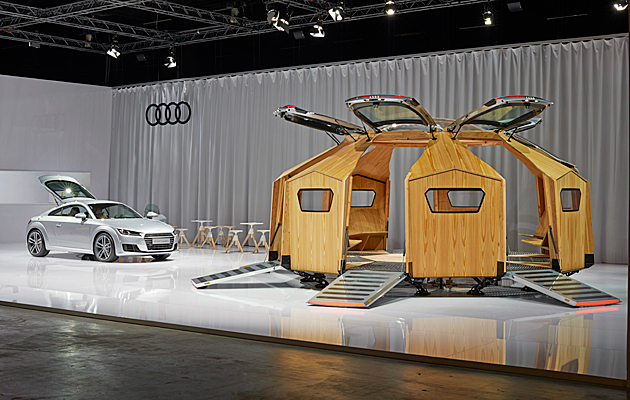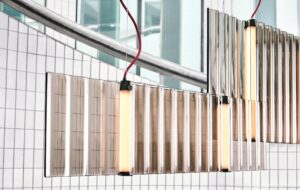|
|
||
|
The German designer talks about how his industrial background shaped his first architectural project – a pavilion at Design Miami/Basel made using parts from an Audi TT coupé At Design Miami/Basel, Konstantin Grcic created a pavilion for the Audi stand, a high-tech hut mounted on stilts and constructed using car parts from the new Audi TT coupé. Icon met the industrial designer and, over a Bavarian breakfast, asked him about his first architectural commission. Is this your first architectural project? Yes, it is. I don’t have an urge to become an architect, but I’ve always thought that architecture is so archaic in how it’s made. Why can architecture not learn or transfer technology used in industrial manufacturing? The collaboration with Audi gave me an opportunity to do something in a very direct way using a ready-made part from a car to build a little house. I think the house would look wrong if we made the entire thing from car parts, so we deliberately have these other elements – the wood, even quite rough timber frame construction creates a tension, a diversity. I wanted to avoid the old cliché of how we imagine the future, of making it look too much like a UFO or flying saucer. In 2014, the future has different typologies, or different issues. It was my first experience building a house, or something of that scale. I was probably most worried about the proportions of it – making it too small or large. Did you know that Jean Benjamin Maneval’s 1965 Bubble House would also be exhibited at Design Miami/Basel or are the obvious similarities fortuitous? I didn’t know it would, no, but of course I did know that every year Galerie Patrick Seguin exhibits a Jean Prouvé house at the fair, which I love. For me Jean Prouvé is that architect who, a long time ago, created a link between industry and architecture. Prouvé, of course, was the master and pioneer of that. And it’s always so nice to see Seguin bring these houses and build them here, and how very practical Prouvé was about the solutions. In a way, with my pavilion, we also have a very simple construction – how everything is put together is very open and simple.
In renders, your pavilion appears on a lava field, which exacerbates its otherworldly qualities, and on a rooftop in New York. Will it be positioned in site-specific places after the fair? For me, it’s more the countryside than the rooftop in the city, because of the TT and the story we are trying to tell. For me, the TT is not a city car – it’s a car to enjoy driving out into the countryside. For me, the pavilion is the destination, somewhere out in nature. It reminds me a little of Charlotte Perriand’s 1938 mountain hut, which was exhibited outside the Grand Palais in Paris a few years ago. I saw it there and, of course, I know all these projects – they’ve always fascinated me. I didn’t particularly want to do something like that, but when this project came along, it suddenly presented the opportunity. The hatchback doors are obviously taken directly from the vehicle. How about the gangplanks leading up into it? We made them, and that was the probably the most sophisticated design part of the whole thing because we had to make them somehow match the very complicated Audi parts. While with the rest we went very basic and simple, we had to employ all sorts of tricks with the walkways. It had to have pistons, for example. Originally we wanted to put the petrol tank lids on the underside, as if it were the door handle and lock. But this car is so new they simply didn’t have seven petrol tank covers to spare. It was difficult enough getting the doors.
|
Words Christopher Turner |
|
|
||
|
|
||



















